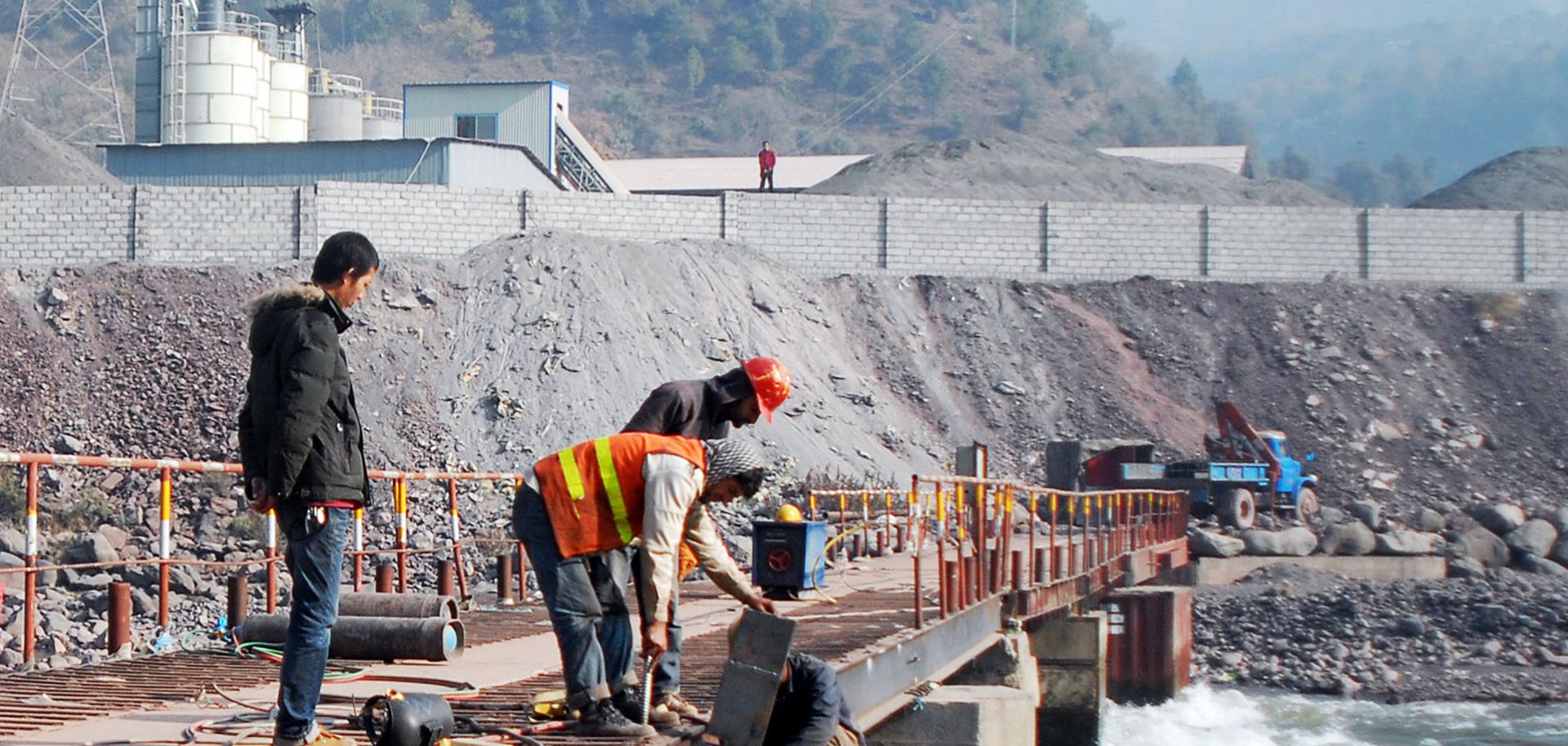ASSESSMENTS
The Grand Design of China's New Trade Routes
Jun 24, 2015 | 09:15 GMT

A Chinese engineer (L) supervises workers building a bridge over a river near Muzaffarabad, the capital of Pakistani-administered Kashmir.
(SAJJAD QAYYUM/AFP/Getty Images)
Forecast Highlights
- Over the next several years, China will devote significant resources to the construction of Eurasian trade routes under its Belt and Road Initiative.
- As transit routes come online, the proportion of Chinese maritime trade passing through South China Sea chokepoints will shrink.
- The new infrastructure built as part of the Belt and Road Initiative will support China's economic rebalancing by opening new markets, generating demand for higher value-added Chinese goods and helping China build globally competitive industries.
- Improving transit routes will lead to new security and political risks, and China's efforts to mitigate these threats could create frictions in the very areas where Beijing is trying to diversify its trade routes.
Subscribe Now
SubscribeAlready have an account?
